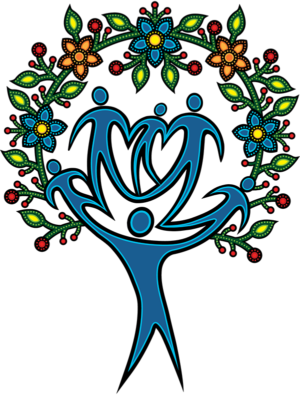Teen Mentoring Toolkit
Tools for planning, implementing and evaluating a quality school or community-based teen mentoring initiative

References
“Students are entitled to welcoming, caring, respectful and safe learning environments that respect diversity and nurture a sense of belonging and a positive sense of self.” Education Act.
References
Alberta, G. O. (2022, September 1). KingsPrinter. Retrieved October 28, 2022, , from https://www.kings-printer.alberta.ca/1266.cfm?page=E00P3.cfm&leg_type=Acts&isbncln=9780779832644
Arevalo, E., Chavira, D., Cooper, B., & Smith, M. (2006). Screening applicants for effectiveness: Guidelines to prevent child molestation in mentoring and youth-serving organizations. Redwood City, CA. Friends For Youth, Inc.
Ballasy, L., Fullop, M., & Garringer, M. (2008). Generic mentoring program policy and procedure manual: Effective strategies for providing quality youth mentoring in schools and communities. Washington, DC. Hamilton Fish Institute on School and Community Violence. Portland, OR. National Mentoring Centre at Northwest Regional Educational Laboratory.
Bowman, R.P., & Myrick, R.D. (1987). Effects of an elementary school peer facilitator program on children with behaviour problems. School Counselor, 34, 369-378.
Carter, E.W., & Hughes, C. (2008). Peer buddy programs for successful secondary school inclusion. Paul H. Brookes Publishing Co., Baltimore, Maryland.
Dubois, D., Holloway, B., Valentine, J., & Cooper, H. (2002). Effectiveness of mentoring programs for youth: A meta-analytic review. American Journal of Community Psychology, 30, 157-197.
Family and Community Support Services. (2012). Family and Community Support Services (FCSS) Outcomes Model: How we are making a difference.
Garringer, M. & MacRae, P. (2008). Building Effective Peer Mentoring Programs in Schools: An Introductory Guide. Mentoring Resource Center. Folsom, CA.
Grossman, J. & Johnson, A. (1999). Assessing the effectiveness of mentoring programs. Contemporary Issues in Mentoring. Philadelphia: Public/ Private Ventures.
Grossman, J., & Rhodes, J. (2002). The test of time: Predictors and effects of duration in youth mentoring relationships. American Journal of Community Psychology, 30, 199-219.
Hansen, K. (2006). BBBS Jack-in-the-Box partnership report: Summary statistics for the Jack-in-the-Box High School Bigs pilot program for School Year 2001-2002. Philadelphia: BBBSA.
Herrera, C., Kauh, T. J., Cooney, S. M., Grossman, J. B., & McMaken, J. (2008). High school students as mentors: Findings from the Big Brothers Big Sisters School-Based Mentoring Impact Study. Philadelphia, PA: Public/Private Ventures.
Ikard, S.S. (2001). Peer mentoring as a method to enhance moral reasoning among high school adolescents. Unpublished dissertation, The University of Alabama, Alabama.
Karcher, M.J., Davis, C., & Powell, B. (2002). Developmental mentoring in the schools: Testing connectedness as a mediating variable in the promotion of academic achievement. The School Community Journal, 12, 36-52.
Karcher, M.J. (2005). The effects of school-based developmental mentoring and mentors’ attendance on mentees’ self-esteem, behaviour, and connectedness. Psychology in the Schools, 42, 65-77.
Karcher, M.J. (2006). The Study of Mentoring in the Learning Environment (SMILE): A randomized study of the effectiveness of school-based mentoring. Manuscript submitted for publication.
Karcher, M.J (2007). Cross-age peer mentoring. Research in Action Series, 7, 3-24. Retrieved from http://www.mentoring.org/downloads/mentoring_398.pdf\
Mentor (2009). Elements of effective practice for mentoring. 3rd Ed. Retrieved from http://www.mentoring.org/downloads/mentoring_1222.pdf
Miller, A. (2007). Best practices for formal youth mentoring. In T.D. Allen & L.T. Eby (Eds.), The Blackwell handbook of mentoring: A multiple perspectives approach (pp.307-324). Malden, MA: Blackwell Publishing.
Noll, V. (1997). Cross-age mentoring program for social skills development. The School Counselor, 44, 239-242.
North, D., & Sherk, J. Preparing mentees for success: A program manager’s guide. EMT Group for the California Department of Alcohol and Drug Programs. Retrieved from http://www.inpathways.net/preparing%20mentees.pdf
Rhodes, J. & DuBois, D. (2008). Mentoring relationships and programs for youth. Curr Dir Psychol Sci, 17, 254-258.
SkillsUSA. (2003). Student2Student mentoring program: A detailed guide to a successful program. Leesburg, VA.
Stoltz, A.D. (2005). The relationship between peer mentoring program participation and successful transition to high school. Unpublished dissertation, University of California at Davis, California.
Tomlin, V.E. (1994). A mentor program for improving the academic attainment of black adolescent males. Unpublished dissertation, University of Kentucky, Kentucky.
Willis, P., Bland, R., Manka, L., & Craft, C. (2012). The ABC of peer mentoring – what secondary students have to say about cross-age peer mentoring in a regional Australian school. Educational Research and Evaluation: An International Journal on Theory and Practice, 18 (2), 173-185.
“We acknowledge that we are on and support Mentoring for Youth in the traditional territories across Alberta of the many First Nations from Treaty 6,7,& 8, the Métis of the 8 Alberta Settlements, and Inuit people whose footsteps have marked these lands for centuries.”
